Sunday Pastries With the Dead 18
The circa-1859 Waterloo Methodist Cemetery at Waterloo Village Historic Site in Stanhope, NJ.
Today’s locale is a gold mine as far as I’m concerned—it’s a triple threat of an old cemetery, historical town, and ghost story. The now-abandoned 1820-era New Jersey village on the banks of a canal was once a thriving business hub, considered a key halfway point between the major industrial centers of New York City and Phillipsburg, NJ.
Through the 1800s, travelers stopped to rest at its hotel, shop at its general store, worship at its church, trade and process goods at its gristmill and sawmill, and have their mules re-shoed at the blacksmith shop and bedded down in the barn or carriage house. But by the early 1900s, the canal couldn’t compete with the much faster and more dependable railroad, and traffic greatly declined. The village was officially abandoned in 1924.
Alongside the townspeople’s fine homes, most of the village’s original structures still stand today. I wandered the grounds in awe, peeking into wavy cylinder glass windows at the dust-covered interiors swaying beyond, my stomach churning and my head pounding—a physical side effect of being within a particularly spiritually active area.
The church was built in 1859 and many of the village’s founding members are interred in its tiny cemetery. One resident—a three-year-old girl named Edith—has stuck around. But we’ll get to her later.
The cemetery’s first burial was John Smith, in 1859—he owned the village’s land and left its oversight to his sons Peter and Nathan (the former is the grandfather of aforementioned Edith, the latter is the father of a famous murder victim in the area; that story will be covered in a future SPWTD). Nathan was a state assemblyman and senator, and after he died in 1852, Peter—who also served in the state senate—took on the thriving family empire. By the late 1800s, the business boasted an income of $75,000 a year, and Peter eventually passed it on to his sons Peter D. and Seymour. This was a town of Smiths, as it turns out.
There were more epitaphs among the stones than I usually encounter. I needed a minute when I saw two-year-old Maggie Schoonover’s gutting Maggie how I miss you (her rosebud symbol signifies a life that ended before it fully bloomed). Lucy McConnell’s He giveth his beloved sleep is simple and beautiful (as is her rose, representing the Virgin Mary, grace, and purity). And I enjoyed the musical quality of Garret Miller’s Released from all his earthly woes, He sleeps in calm and sweet repose.
Alexander and William McConnell’s stunning carved lily (symbolizing the purity and innocence of the afterlife) and rose (for a man, it represents the fleeting quality of life), respectively, were the first I’ve seen of this design style—I love how the flowers appear laid atop the headstones. William Batson’s beautiful wreath means eternal memory and immortality, and Eliza Dunn’s anchor stands for her ties to God and her strong faith.
And now, to our ghost story. Little Edith B. Smith—daughter of Peter D., granddaughter of Peter—died in 1885, just a month shy of her fourth birthday. She lived in this beautiful white Second Empire Victorian-style mansion, which sits directly in the center of the village. And according to many visitors, she never left.
During my initial walk through the village, I knew immediately that this was its most active house—I broke out in goosebumps the second I looked at it. I got the feeling someone very overbearing and protective lived there—a man, I sensed, who didn’t want his property touched or changed. So when I stopped into the visitor’s center, I asked about it. Turns out, Peter D. had that reputation—but it’s his daughter, Edith, who is most often spotted. She’s described as having blonde hair and a white dress.
The woman in the visitor’s center told me she was walking her granddaughter around the property on a day that it was closed to non-employees, and when they passed Edith’s house, her granddaughter pointed to an upstairs window and asked, “I thought you said no one lived here—why is that little girl up there?” The woman looked up and saw Edith, as well. She told me that concerned visitors often stop into the center to report a little girl who seems to be lost—always with the same description. At one point a man from the state came through to take interior tax photos of all the properties, and Edith showed up in the background of many (who do I have to bribe to pull those from the archives?!)
I went back to the house, sat on the porch, hit record on my phone’s video setting, and invited Edith to come closer and sit near me so we could chat. Since February 19 just recently passed, I sang her happy birthday, then I asked her who made her white dress and what her bedroom looks like, if she’s lonely or if she has any friends with her, what games she likes to play, and what her daddy Peter was like. She seemed very shy (I could tell she was hiding so I asked if she liked playing peek-a-boo), but I felt her closeness in my own exhaustion (the building energy of a spirit generally saps me of my own). I didn’t end up catching anything on audio, but I get the sense Edith was happy (and maybe a little overwhelmed) to have someone acknowledge her so directly.
I can relate, Edie babe. Until next Sunday, fellow taphophiles!

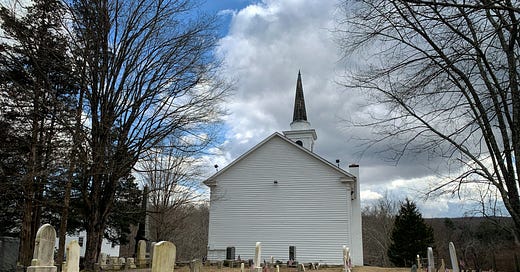






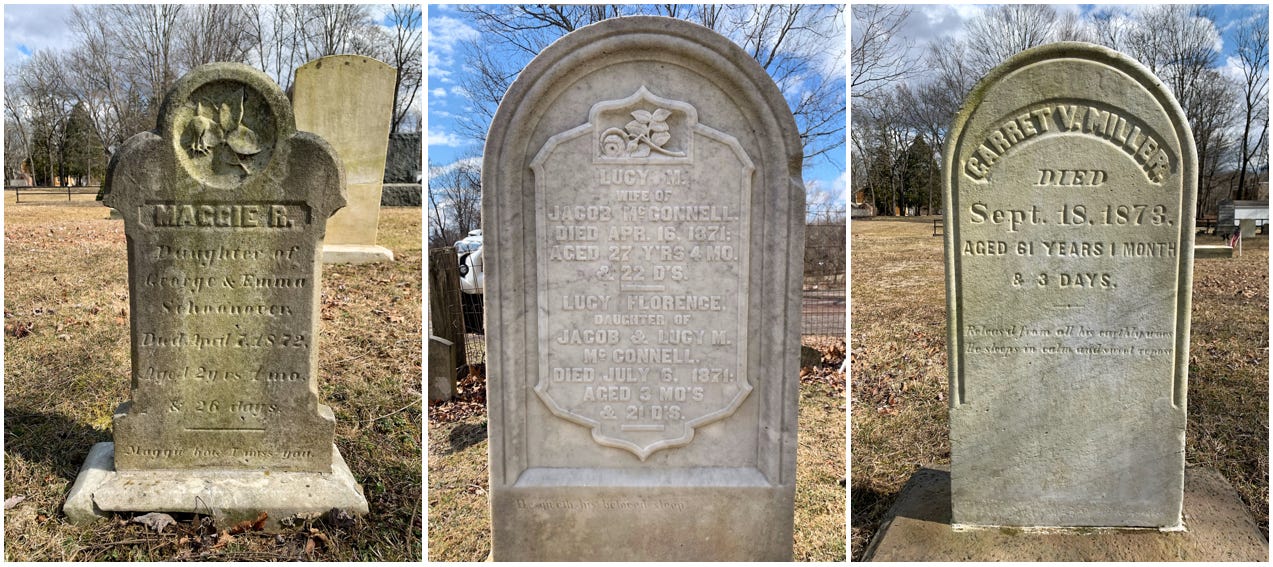
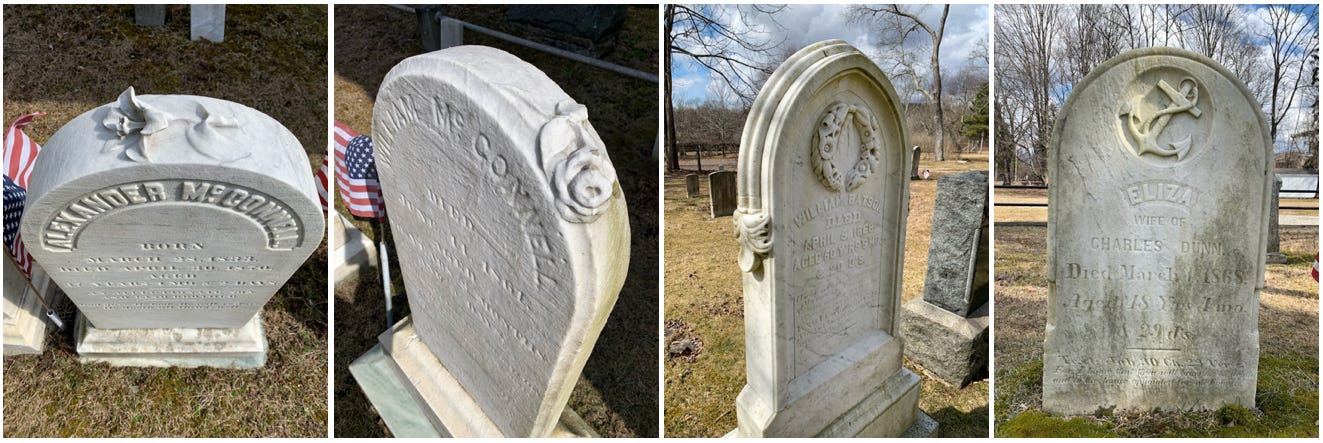
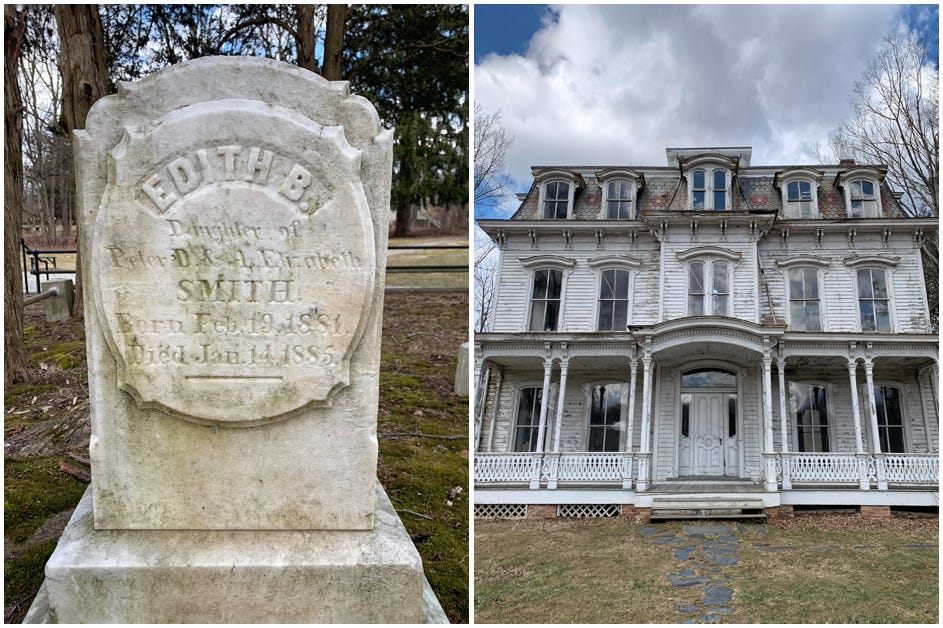
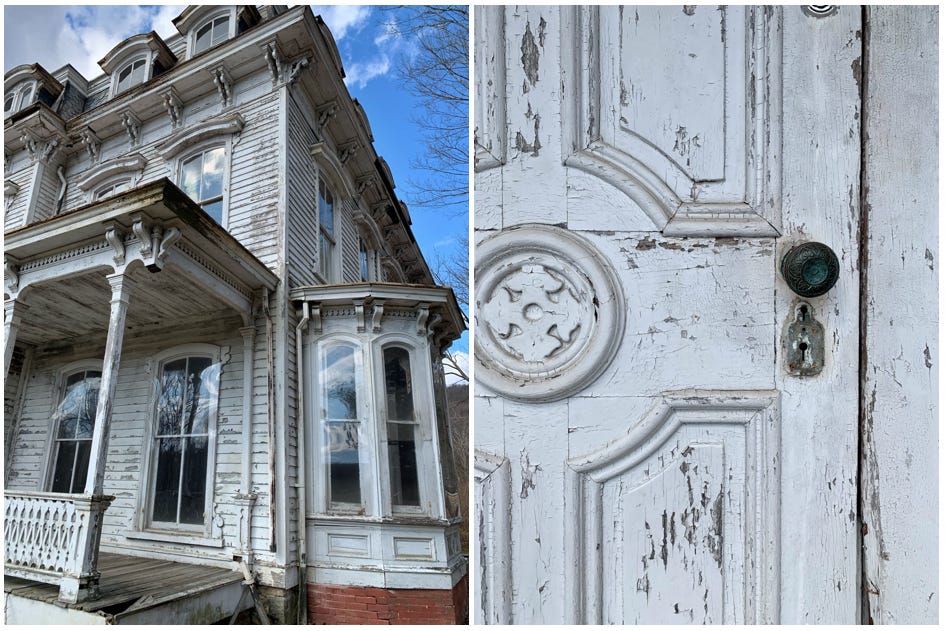


Exactly! Didn’t want to say that in case you hadn’t seen it.
I didn't know the meaning behind those flowers 🤍 thankyou for sharing, as always a beautifully written piece